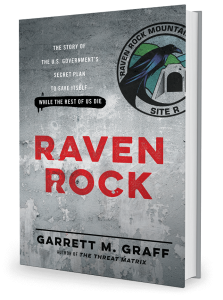Below is the text of my monthly “Editor’s Letter” in the new issue of Washingtonian.
Our arts writer, Sophie Gilbert, has one of those all-consuming jobs that define the lives of so many Washingtonians. Many evenings, she leaves the office and heads to one theater or another to review a play, taking notes in the dark late into the night. Sometimes the plays are worth it; sometimes they’re not. Once or twice a season, she gets to see something truly extraordinary. In January, I was lucky to be out with her when we saw what will be remembered as one of the season’s best plays—Arena Stage’s Red.
The performance by local actor Edward Gero, who plays painter Mark Rothko, is one of the best I’ve seen in my years of Washington theater. Red is an innovative work—it won a Tony in 2010—that fully immerses you in the warehouse studio onstage.
Rothko, as Gero portrays him, will be a familiar character to many Washingtonians—an obsessive and tireless professional, much concerned about his competitors and his place in history. He pours everything into his work—including one scene in which he collapses after a painting sprint that would leave Olympian Usain Bolt awed.
Red is an exciting play for Washington, partly because of the wealth of Rothko resources around us. The Phillips Collection has a Rothko Room—where the Russian-born abstract painter personally dictated the space’s sole seating, a bench—and the National Gallery of Art has the world’s largest collection of Rothkos, including nearly 300 paintings and 600 works on paper donated by the artist’s legacy foundation.
These and other cultural resources are part of what makes Washington such a magnet for smart people. For the second year in a row, Washington has been named the most literate city in the country, and it regularly ranks at the top of most surveys for best-educated and smartest regions, too.
This issue of the magazine features a number of people who define the intelligent, tireless, near-obsessive Washington professional archetype: Georgetown basketball coach John Thompson III, DC nightlife impresario Joe Englert, and director of Immigration and Customs Enforcement John Morton. All three have jobs that consume nearly every minute of every day and blend their social and professional lives.
I ran into Morton at the Four Seasons in Georgetown a few days after I interviewed him for the magazine. I was leaving following drinks with a local entrepreneur, and Morton was arriving in one of Washington’s iconic black SUVs for dinner with a visiting foreign official, having spent the morning in Indianapolis doing a press event about the Super Bowl and ICE’s seizure of nearly $5 million in counterfeit NFL merchandise. It was 8 pm when I saw Morton, he’d worked a long day, and he still had hours to go before he slept.
It struck me that in some ways he and Sophie Gilbert aren’t all that different—they’re both children of the British Isles (she from England, he from Scotland) doing things they care about deeply and that are, in their estimation, worth all the time, hours, and stress. They both came to Washington to work hard, challenge themselves, and immerse themselves among interesting people doing interesting work.
With that in mind, you’ll notice some changes in this issue—notably a new section, I.Q., toward the front of the magazine, that focuses on the people and ideas that define Washington. We also introduce a new department, What Made Me, that examines the early influences that shaped the lives of Washington leaders, starting with businessman David Bradley on page 56.
There’s new organization in the back of the magazine to make it easier to find our service articles: The section called Life (page 187) includes our beauty, wellness, and shopping coverage; Taste (page 195) encompasses restaurant reviews and food stories; Home (page 211) covers home design, real estate, and family.



Recent Comments